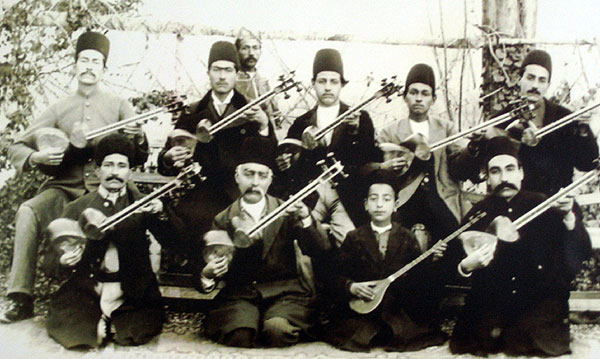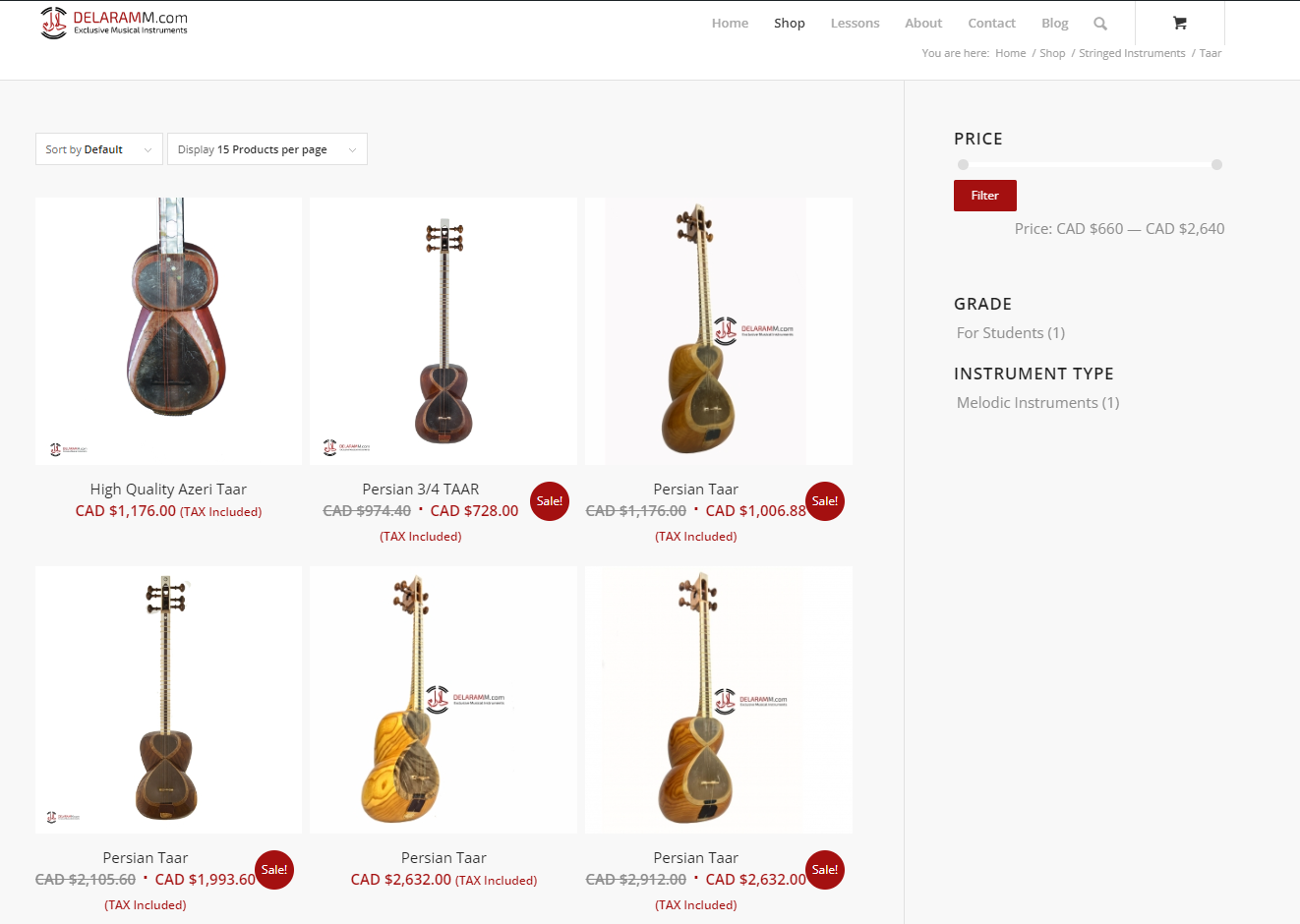The Difference Between Tar and Setar: A Detailed Comparison
The Resonating Strings: Differences between Tar and Setar
Music, a universal language of emotional expression, has been instrumental in binding cultures and communities together since ancient times. In this context, two significant musical instruments originating from Persia (modern-day Iran) – the Tar and the Setar – have a unique standing. They not only reflect the rich cultural tapestry of the region but also underscore the deep intrinsic connection between sound, spirituality, and human sentiment.
This comprehensive guide explores the differences between Tar and Setar, their historical significance, physical characteristics, and sonic qualities. We will also provide insights into purchasing authentic Persian instruments from Delaramm.com.
Historical and Cultural Background
The Tar and Setar are essential elements of Persian music, with distinct historical and spiritual associations. Their names derive from the Persian word “Tar,” meaning “string.”
- The Tar dates back to the 18th century and was commonly played in royal courts and by professional musicians. Its rich and resonant sound made it an ideal choice for Persian classical music.
- The Setar has a more ancient history, tracing its roots to the 7th century. It is closely linked to Sufi mysticism and spiritual practices, producing a softer, introspective tone that suits meditative and poetic performances.
Structural Dissimilarities
| Feature | Tar | Setar |
|---|---|---|
| Body Design | Double-chest resonance box | Single-chest resonance box |
| Material | Mulberry wood, lamb intestine membrane | Mulberry wood, lamb intestine membrane |
| Strings | Six strings in a dual-triplet setting | Traditionally three; now four strings |
| Size | Larger and more robust | Compact and lightweight |
| Plectrum | Played with a brass pick | Played with the index finger |
The Tar: Double Chest of Resonance
Often called the “Sultan of Instruments,” the Tar features:
- A double-bowl-shaped body made from mulberry wood.
- A soundboard covered with stretched lamb intestine, giving it a unique timbre.
- Six strings, arranged in three pairs (dual triplet configuration).
- Played with a brass plectrum (Mezrab) for dynamic articulation.
- Adjustable frets, allowing for intricate microtonal melodies.
The Setar: Simplicity and Spirituality
The Setar is a more minimalistic instrument known for its intimate sound. Its features include:
- A smaller, pear-shaped wooden body made of mulberry or walnut wood.
- Originally three strings, though most modern versions have four strings for expanded tonal possibilities.
- Played with the index finger, unlike the Tar, which uses a pick.
- Adjustable frets, enabling microtonal flexibility.
- A thin wooden soundboard, contributing to its soft and airy tone.
Physical Characteristics
Tar
- Body: The tar has a double-bowl-shaped body made of mulberry wood. Its distinctive shape resembles a figure-eight and contributes to its rich and resonant sound.
- Strings: The tar typically has six strings arranged in three pairs, tuned in unison or in octaves. These strings are made of steel or brass.
- Bridge: The tar features a movable bridge made of bone or wood, which enhances its tonal quality.
- Frets: The tar has adjustable frets made of gut or nylon, allowing for the microtonal intervals characteristic of Persian music.
- Soundboard: Its soundboard is made of a thin layer of lambskin, giving the instrument its distinctive timbre.
Setar
- Body: The setar has a smaller, pear-shaped wooden body made of mulberry or walnut wood. Its compact design gives it a more intimate sound.
- Strings: Originally with three strings, the setar now has four. These strings are made of steel and gut, producing a delicate and soft tone.
- Bridge: The setar also has a movable bridge, but its design is simpler than that of the tar.
- Frets: Like the tar, the setar has adjustable frets made of gut or nylon, allowing for intricate tuning.
- Soundboard: The setar’s soundboard is made of thin wood, contributing to its light and airy sound.
Sonic Characteristics: Tonal Differences
Tar: Powerful and Resonant
The Tar’s double-chest resonator and six-string arrangement produce a rich, full-bodied sound with deep resonance. It is ideal for grand performances, ensemble settings, and Persian classical music.
Setar: Soft and Expressive
The Setar, with its smaller resonance box and fingernail-plucking technique, generates a warmer, more intimate tone. It is often used in solo performances, meditative compositions, and Sufi spiritual music.
Evolution and Modern Adaptations
The Tar’s Evolution
While the core design of the Tar remains unchanged, modern innovations include:
- The use of different types of wood or synthetic materials for sound enhancement.
- Integration of electronic amplification for contemporary performances.
The Setar’s Adaptation
The Setar has evolved from a three-stringed to a four-stringed instrument, allowing for a broader tonal palette. Some musicians even experiment with five or six strings, pushing the boundaries of its traditional sound.
Expanding Horizons: The Tar and Setar Beyond Borders
While the Tar and Setar are quintessentially Persian, their appeal has transcended national boundaries. They’ve made appearances in various international music genres, from world fusion to progressive rock and from orchestral compositions to avant-garde experimental pieces. Global musicians have discovered the unique tonal qualities of these instruments, integrating them into a wide spectrum of musical expressions. This global embrace has amplified the cultural significance of the Tar and Setar, underscoring their potential to be universal bridges of musical communication.
Learning the Craft: Mastering the Tar and Setar
While having a Tar or Setar in possession is the first step, mastering these instruments requires time, patience, and the right guidance. Both these instruments have unique playing techniques with specific fingering and plucking methods.
Finding a Mentor
The traditional way of learning involves finding a skilled mentor who can guide the learner in both the technical and interpretative aspects of playing these instruments. Many music schools and conservatories around the world, particularly in areas with significant Iranian diaspora, offer classes in Persian music where one can learn to play the Tar or Setar.
Procuring the Instruments: Delaramm.com
Accessing these traditional instruments, whilst preserving their authenticity, can be a daunting task, especially for non-residents of Iran. Thankfully, platforms like Delaramm.com offer a viable solution. This website is a trusted source for a wide variety of Persian instruments, including the Tar and Setar.
Delaramm: Authenticity at Your Doorstep
At Delaramm.com, each instrument is handcrafted by skilled artisans, promising high-quality sound and original designs. From beginner to professional level, each Tar and Setar is meticulously crafted to meet individual needs. They offer worldwide shipping, ensuring the spirit of Persian music reaches enthusiasts irrespective of geographical barriers.
How to Buy from Delaramm.com
Accessing authentic Persian instruments outside Iran can be challenging. Delaramm.com simplifies this process, offering expertly handcrafted Tars and Setars.
- Why Choose Delaramm?
- Instruments crafted by skilled artisans.
- A variety of designs for beginners and professionals.
- Worldwide shipping for music enthusiasts globally.
- How to Order:
- Visit Delaramm.com.
- Navigate to the “Instruments” section.
- Select your preferred Tar or Setar.
- Proceed to checkout via secure payment gateways.
Conclusion: Two Instruments, One Cultural Heartbeat
Despite their differences, the Tar and Setar both resonate with the rhythm of Persian history and culture. They offer different auditory experiences, yet both enrich the listener’s soul. Whether you’re a musician seeking to broaden your repertoire or a connoisseur of world music, procuring these instruments from a trusted source like Delaramm.com could be your gateway to experiencing the profound essence of Persian musical tradition.
FAQ: Tar and Setar
1. How old is the Persian Tar?
The Persian Tar dates back to the 18th century. It gained prominence in the royal courts of Persia for its rich and balanced sound.
2. What does “Tar” mean in Persian?
In Persian, “Tar” means “string,” reflecting the instrument’s design as a plucked string instrument.
3. What is the Persian Tar made of?
The Persian Tar features a double-chest resonance box made from mulberry wood, covered with a thin membrane of stretched lamb intestine. It has six strings arranged in pairs.
4. How many strings does a Setar have?
Traditionally, the Setar had three strings, which is reflected in its name: “Se” (three) + “Tar” (string). Modern Setars often have four strings to enhance their tonal range.
5. Is it easy to learn Setar?
Learning the Setar requires dedication and practice, especially due to its nuanced finger-plucking technique and the precision required to produce its soft, melodic tones. However, with proper guidance and patience, it is an accessible instrument for beginners.




